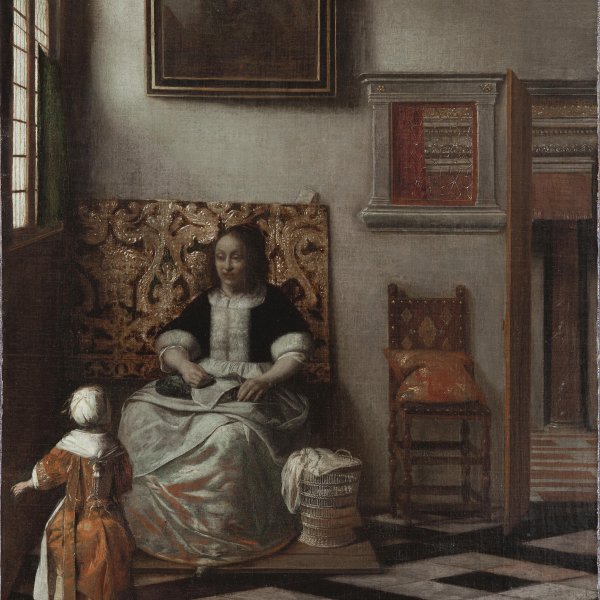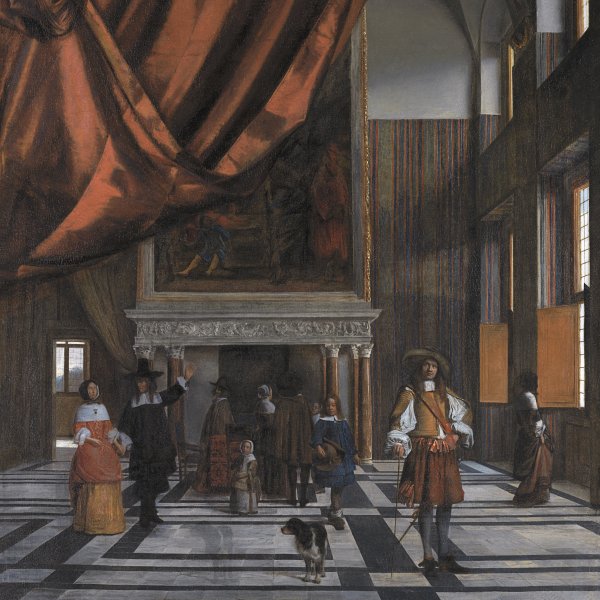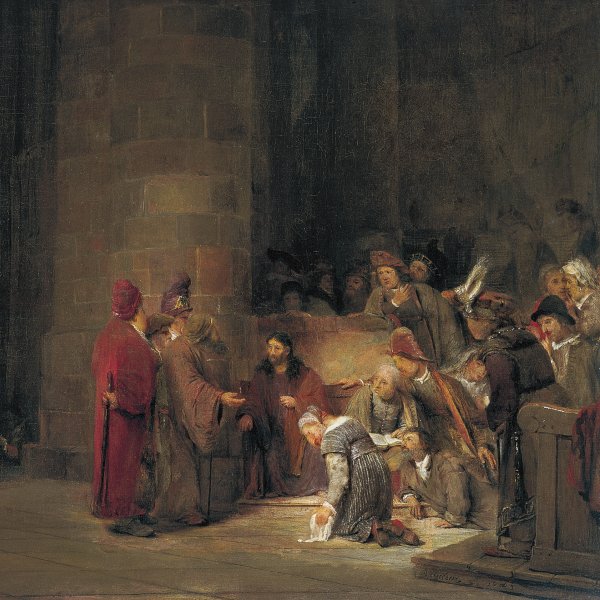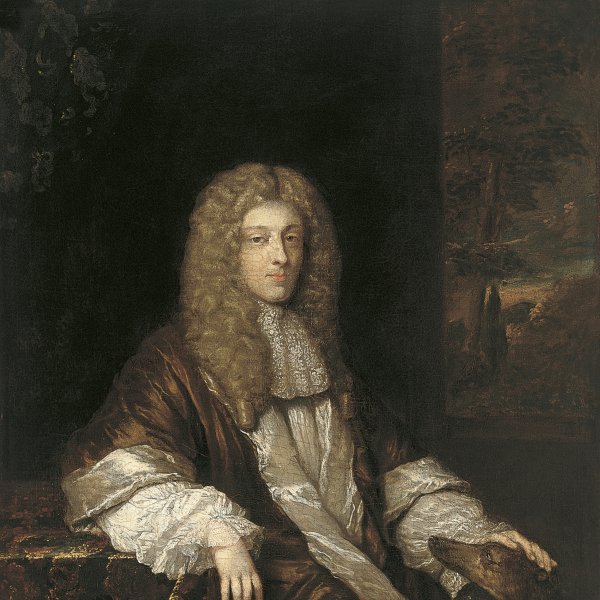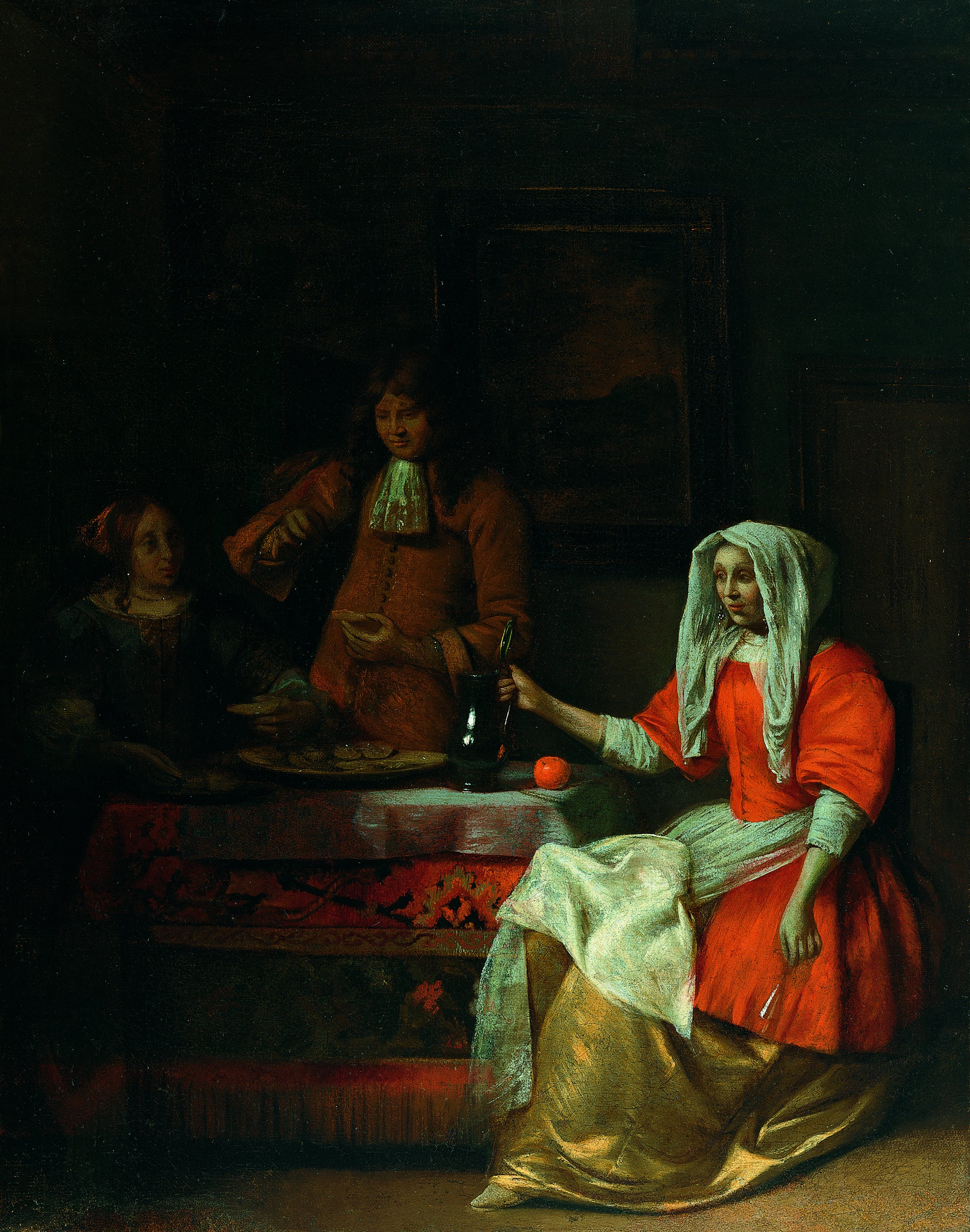An Interior with Two Women and a Man Eating Oysters
1681
Oil on canvas.
62.5 x 49.5 cm
Carmen Thyssen Collection
Inv. no. (
CTB.1995.2
)
Not exhibited
Level 2
Permanent Collection
Level 1
Permanent Collection
Level 0
Carmen Thyssen Collection and Temporary exhibition rooms
Level -1
Temporary exhibition rooms, Conference room and EducaThyssen workshop
In a luxuriously subdued interior, two ladies seated at a table covered with an oriental carpet share a drink and a platter of oysters with a standing gentleman who prepares one of the delicacies. The woman at the right raises a lid of a pewter jug with one hand and holds a flute glass in the other. An orange on the table offers a brilliant accent of colour. At the back are a covered bed, an upright painting in a black frame, and a closed door beneath a ceiling decorated with dental mouldings.
An example of Pieter de Hooch's late manner, this painting is typical of the elegant, highly formal genre scenes that he executed at the end of his career in Amsterdam. Only two works by the artists are dated later. During this period his figures became more restrained and angular in their gestures, his tonality became even darker, and he favoured a palette of rich hues-gold, silver and a bright reddish-orange. While some of the last paintings betray dismaying lapses in quality, especially in their draftsmanship, this is one of his most successful late compositions. Since there is no evidence that De Hooch ever prospered from his work, indeed he seems to have lived very modestly throughout his career, this painting like his other elegant subjects is probably a fiction far removed from his personal experience. It is an ideal of privileged leisure calculated to appeal to the wealthy, art-buying public who imitated the French in their manners and style. By 1681 when this painting was executed, the art market had partially recovered from the collapse it suffered when Louis XIV's troops invaded the Netherlands in 1672, but there is no evidence that De Hooch partook in this recovery. Rather, his final aristocratic parties provide a poignant counterpoint to his own sad end.
The subject of an oyster meal was popular among Dutch genre painters, having been repeatedly treated by, among others, Dirck Hals, Frans van Mieris, Jan Steen, and Jacob Ochtervelt. De Hooch himself addressed the subject earlier in his courtyard scene dated 1677 in the National Gallery, London. Called minnekruyden (love herbs) by the popular Dutch poet, Jacob Cats, oysters have been regarded since Antiquity not only as delicacies but also as aphrodisiacs.
Peter C. Sutton
An example of Pieter de Hooch's late manner, this painting is typical of the elegant, highly formal genre scenes that he executed at the end of his career in Amsterdam. Only two works by the artists are dated later. During this period his figures became more restrained and angular in their gestures, his tonality became even darker, and he favoured a palette of rich hues-gold, silver and a bright reddish-orange. While some of the last paintings betray dismaying lapses in quality, especially in their draftsmanship, this is one of his most successful late compositions. Since there is no evidence that De Hooch ever prospered from his work, indeed he seems to have lived very modestly throughout his career, this painting like his other elegant subjects is probably a fiction far removed from his personal experience. It is an ideal of privileged leisure calculated to appeal to the wealthy, art-buying public who imitated the French in their manners and style. By 1681 when this painting was executed, the art market had partially recovered from the collapse it suffered when Louis XIV's troops invaded the Netherlands in 1672, but there is no evidence that De Hooch partook in this recovery. Rather, his final aristocratic parties provide a poignant counterpoint to his own sad end.
The subject of an oyster meal was popular among Dutch genre painters, having been repeatedly treated by, among others, Dirck Hals, Frans van Mieris, Jan Steen, and Jacob Ochtervelt. De Hooch himself addressed the subject earlier in his courtyard scene dated 1677 in the National Gallery, London. Called minnekruyden (love herbs) by the popular Dutch poet, Jacob Cats, oysters have been regarded since Antiquity not only as delicacies but also as aphrodisiacs.
Peter C. Sutton





